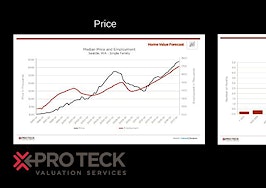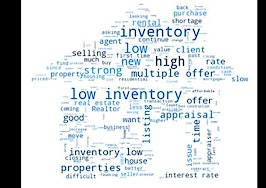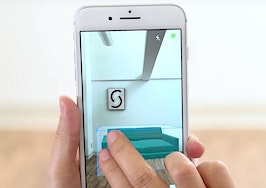- Tight markets make online listing information critical to buyers.
- 360-degree home tours are especially helpful to buyers wanting to gain an advantage over their market competition.
Have suggestions for products that you’d like to see reviewed by our real estate technology expert? Email Craig Rowe.
I take back everything I’ve said about 3-D home tours.
Well, more accurately: I take back what I haven’t said.
As a creative traditionalist, I’ve always believed that a good photographer can capture a home’s depth and amenities as well as any virtual tour.
Because of this, I’ve always met the idea of 3-D tour software with indifference and cynicism.
I like iGuide a great deal, but agreed with its CEO when he told me their launch of a tour product was merely a result of ongoing product development.
That’s all changed.
Late last week my wife and I found ourselves squeezed into a buying market tighter than a slot canyon. We are now faced with having to leave the rental we’ve been in a year ahead of our homebuying plan.

In a matter of hours we learned that any offer less than full price was at an immediate disadvantage, and you have to place your offer as soon as — or before — the home hits the market if you want to stand a chance.
In many cases, you won’t have time to see properties in person.
I now know that a smooth, immersive 3-D walking tour helps the anxious buyer prepare to make a confident offer without seeing the property in person.
Truckee, California has a small market of custom homes and historic properties with funky layouts and puzzling renovations. There are no planned developments packed with cookie-cutter floor plans. Few homes are the same.
To get a seller‘s attention, you need to offer fast, clean, and high; and a mere gallery of pictures won’t give me the confidence to do that.
Regardless, we made an offer on a home based on images alone.
The few virtual tours I’ve seen have given me a much better idea of how our furniture will match a room’s layout. They’ve also brought life to listing agent notes like, “Great mountain views from the rear deck.”

Screenshot of a 3-D model from Matterport. Users can click the goggles icon to view the tour in virtual reality.
This technology lets me walk through a garage, go upstairs and into bathrooms. It lets me see where I’ll be putting my groceries down as I hold the door open with my foot. It allows me to be there without being there.
Room-to-room flow, finishes and space are all much more accurately conveyed via 3-D tours.
We submitted two offers: one on a home we haven’t yet visited in person, and one on a home we visited thanks to our fast-acting buyer agent.
On the former, we can’t determine via pictures where the master bedroom sits relative to the second and third bedrooms, and we have no idea how to enter the house from the garage or where the washer and dryer are located.

Source: Immoviewer homepage screen shot
It’s a very tough time to be a buyer.
We need every tool out there to enable us to move fast and make smart offer decisions. The more we learn about a home online, the better equipped we’ll be to work with an agent.
Relative to that, I’m finding that in today’s marketplace — or at least the one I’m shopping in — the agent’s role as information provider is shrinking.
The web moves much faster than they can, and I don’t hold that against them.
Most importantly, the role of transaction manager — and therapist — has become more critical than ever.
The value we’ve been provided to date is well beyond 3 percent of the transaction.
3-D tours, whether they’re done with iGuide, Matterport, Immoviewer or any of the others, are vital to capturing a buyer’s interest.
Have a technology product you would like to discuss? Email Craig Rowe.












